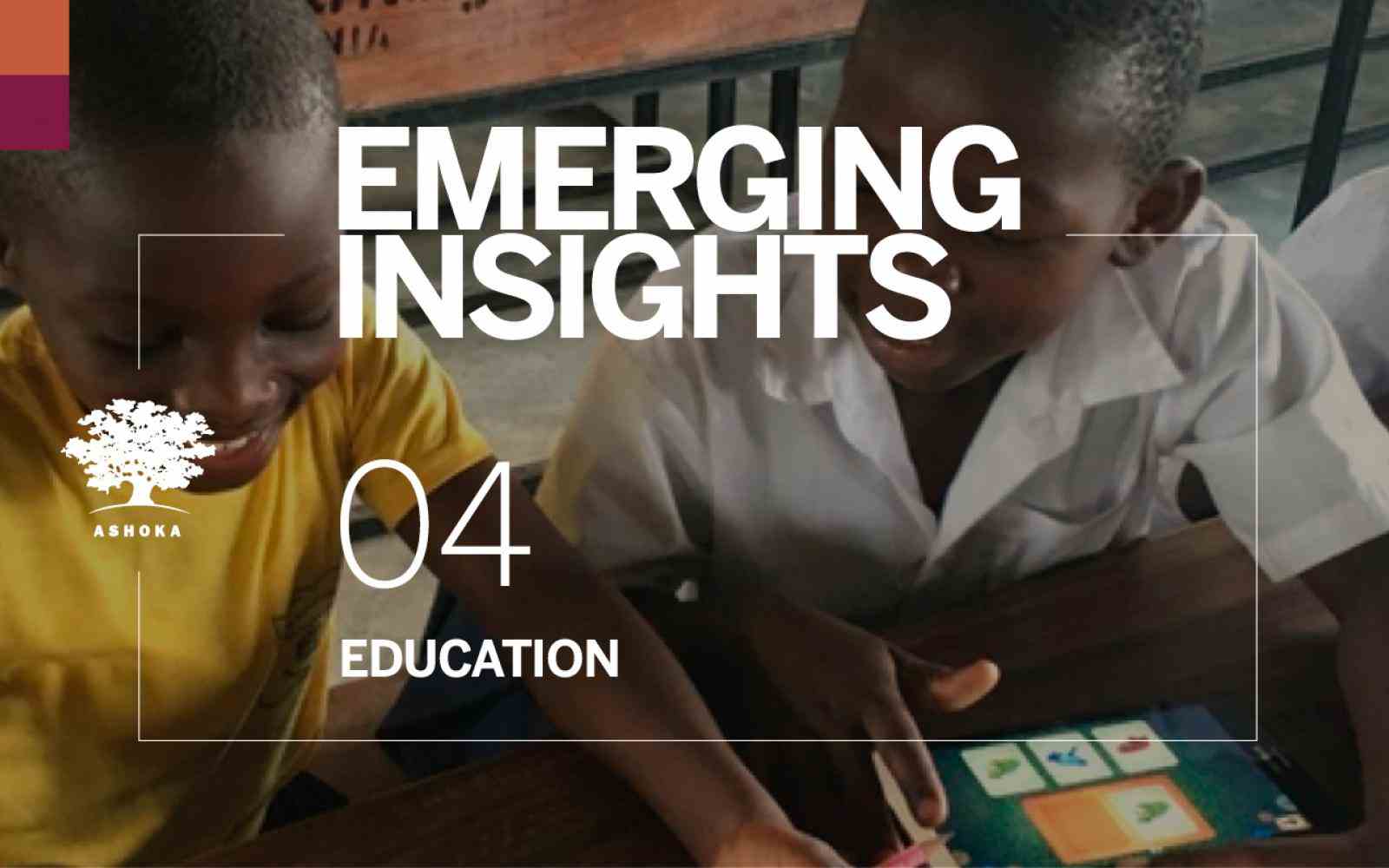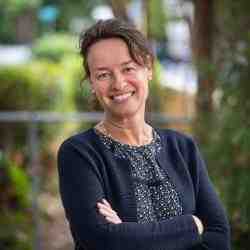GLOBAL ISSUES
In some parts of the world, social innovations in educational access and design are bringing technology into the classroom, enabling students to engage in real-world simulations and preparing them with skills that will enable success in the 21st century.
Technology can democratize learning and enable young minds to have vast amounts of information available to them within milliseconds. This is not without its problems – digital environments mean that students can find themselves disconnected and placeless.
Unfortunately, in other places, including in the backyards of some of the world’s wealthiest countries, access to quality, relevant and inclusive education eludes many. Children on the margins – from immigrant, indigenous or other minority communities – continue to find it difficult to assimilate or find representation in outdated curriculum.
NEW IDEAS
16 Ashoka Fellows in 2019 are examining historical structures and gaps to implement new access models that improve educational outcomes. Fellows have developed tools and strategies to bring the experience of all children into the fold, including culturally sensitive pedagogies, empowering networks, and maximizing the potential of technology to fill gaps in knowledge and experience.
Increasing knowledge through culture
As more and more people migrate to urban South Korea – 50% of the country’s population resides in the Seoul metropolitan area – young people who remain in the countryside find themselves at an increased disadvantage in education and learning. Schools are shutting down in these regions at an alarming rate, leaving families with the difficult decision of where to educate their young people.
Representation and redirecting the eye of the public is important in Shelly Elverum’s work with Inuit youth in Canada.
Utilizing tech to bridge the educational access gaps
In Indonesia, there is a wide digital skills gap, especially among young people who come from rural areas that make up half of the country’s population. While there are positive signs like increasing mobile telephone infiltration, students are not being equipped with digital literacy that would enable them to tap technology’s full potential. Dewis Akbar created Lab on a Bike as a decentralized model of ICT education. Equipped with a motorbike that can be set up as a popup computer lab, off-duty teachers reach last mile communities to inspire and enable creative thinking, problem solving and lifelong tech learning.
In the United Kingdom, Jennifer Lexmond uses tech to help parents, especially those from economically disadvantaged backgrounds, prepare their young children for success in school.
In Tanzania, Isaya Yunge creates viable opportunities for low-income families to enable young people to access quality higher education. He built Somaapp, a mobile phone and web application, which tailors scholarship opportunities to the specific talents and qualities of applicants. In addition, the app provides support to applicants through sample essays and applications and engages an ecosystem of high schools, student communities, scholarship providers and universities. Within its first twelve months, Somaapp enabled 1,000 Tanzanian students to connect to short course, full study and conference scholarships. 15,000 students in Tanzania, Zambia, Rwanda, Nigeria and South Africa used the application to win a total of $850,000 in scholarships.
Bolstering public education
In Germany’s stratified public education system, migrant children face hurdles to advance into upper-level or higher education. Upper schools (Gymnasiums) which feed into universities are often homogeneous – whereas 47% of the attendance at lower schools, or vocational training programs, is made up of children with migrant or lower-economic backgrounds. To ensure that all children feel they have the potential to integrate, Steffi Biester’s Kickfair uses self-learning and peer support through street football to help young people experience cohesive and comprehensive kinesthetic, cognitive and emotional learning both on and off the field. Street football is a democratic game where young girls and boys are given the ability to negotiate and define the rules of the game before play and then are able to discuss compliance after it is over. Youth leaders help to guide and connect with younger players and become the leaders and organizers for future events. In one year, Kickfair has reached over 13,000 students during 730+ events in 40 locations across Germany. Steffi’s organization has been integrated into the curriculum at several schools and is targeting new networks to share the model for national adoption.
HOW TO:
Fight for equity in US Schools
In 2019, Ashoka elected two Fellows in the United States who are focused on bridging the achievement gap in public schools to ensure that young people of color are able to overcome the roots of systemic racism and succeed in their educational goals.
Laura Wilson Phelan built Kindred out of a frustration that there were few authentic dialogue spaces where parents from diverse backgrounds could advocate and communicate their families’ educational issues and needs.
Laura and William’s work teaches us lessons in how to better structure an education system where everyone can be successful:
- Make parents powerful: Black parents often struggle to navigate racial bias and advocate for their children in schools. Village of Wisdom’s flagship tool, Black Genius Profile, enables parents to assess their child’s strengths and needs to share with their children’s teachers. They also ensure that parents are equipped to advocate not just for their own children, but for culturally responsive education for all black youth. Kindred focuses on bringing parents of diverse backgrounds together and encourages them to take collective action to address inequity in their schools.
- Have the hard conversations: At their core, Kindred and Village of Wisdom focus on sparking dialogue on issues that are too often unspoken. Village of Wisdom uses a culturally affirming climate survey to assess student perceptions about a school. This data is then used to think critically about adjustments the school can make to change focus. Kindred’s dialogue-to-action groups are safe spaces to talk about the difficulty of diversity, beyond the buzz word. These dialogues are designed to enable parents to move beyond bias and fear to really be able to push for the change that is needed to make public schools more equitable.
-
Build a community: Both Kindred and Village of Wisdom use models that are strengthened by parents, educators and the community being able to work together to improve the spaces in which young people learn and grow. The end goal of Kindred’s interventions are vibrant and engaged equity-driven parent groups whose voices are collectively amplified with tangible policy and norm changes in their children’s schools. Village of Wisdom engages parent and student organizers as technical assistants who ensure that minority voices are heard by school leaders as they make decisions.
THE OPPORTUNITY
Understanding the root causes to drive systemic change is something that Ashoka Fellows do with confidence. Within their institutions and organizations, there are no limits to their capacity to find and make change. One of the most persistent limitations, however, remains in the disconnect between funders and changemakers. Ashoka embarked to identify insights and recommendations to solve this chasm with publishing partners Catalyst 2030, Co-Impact, Echoing Green, Schwab Foundation for Social Entrepreneurship, and the Skoll Foundation with support from McKinsey and SystemIQ. The resulting report “Embracing Complexity: toward a shared understanding of funding systems change” is a collective effort to bring together leaders in the field of social innovation and identify core principles such as embracing a systems mindset, supporting evolving paths to systems change, working in true partnership, preparing for long-term engagement, and collaborating with other stakeholder. Ashoka welcomes thought partnerships that help to provide tools and resources to the wider ecosystem for lasting and sustained change.





